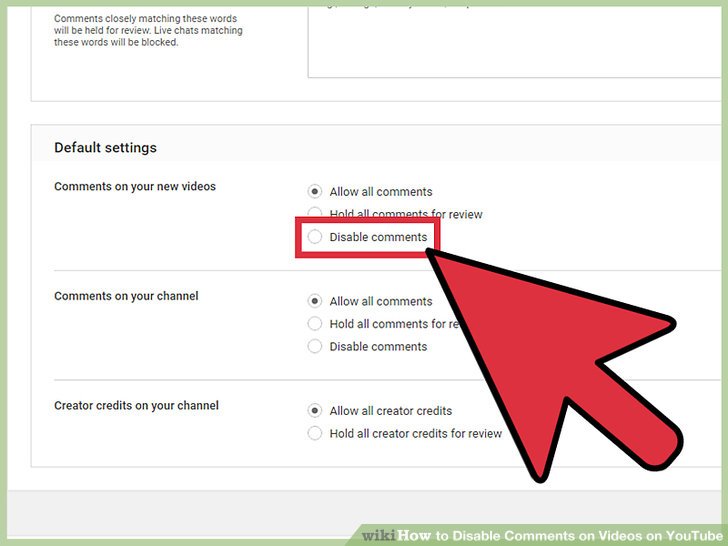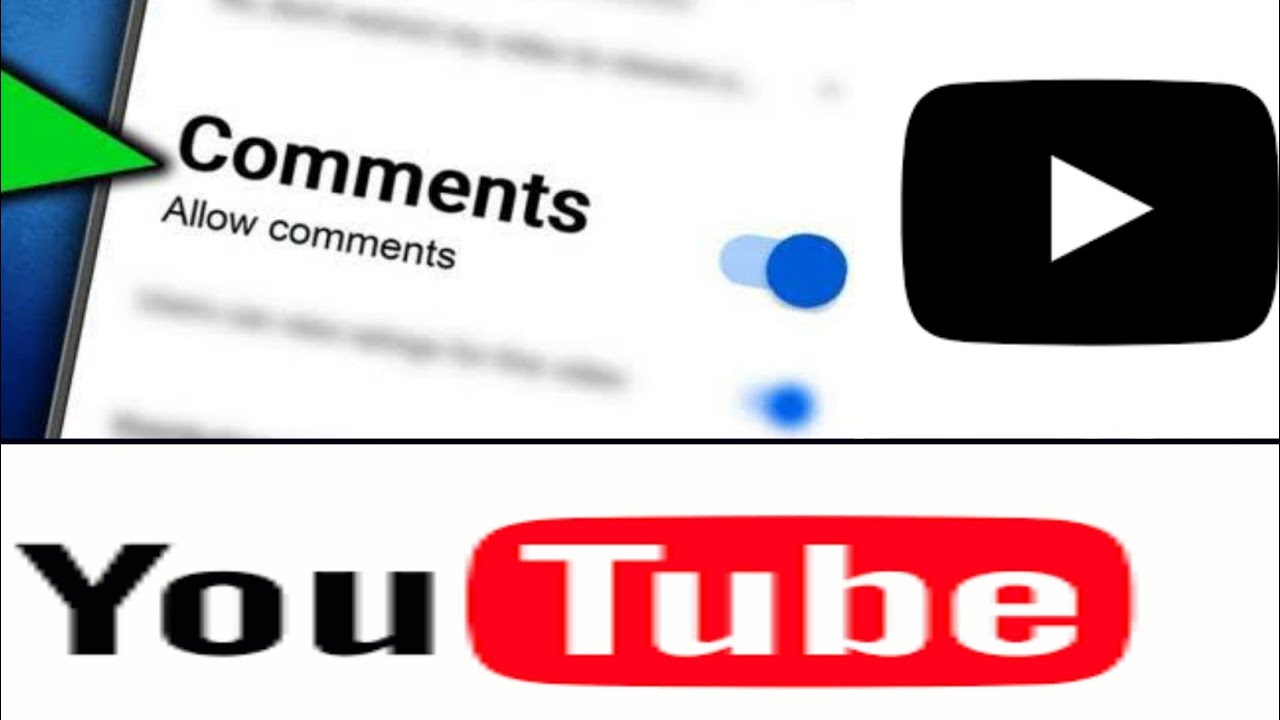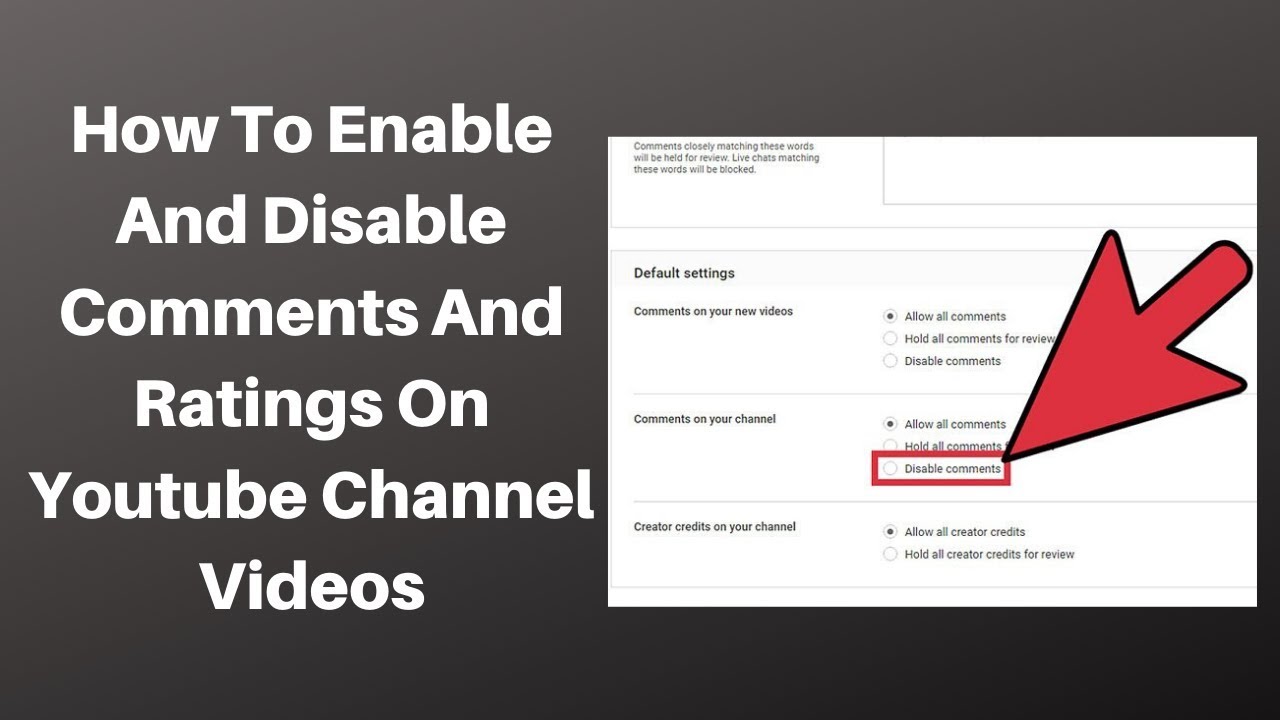Introduction to YouTube's Comment System

YouTube has revolutionized the way we consume content, allowing creators to connect with audiences worldwide. One of the key features that fosters this interaction is the comment section. It’s not just a place for viewers to share their thoughts; it’s also a community hub where fans can engage with creators and each other. But have you ever wondered why YouTube sometimes disables comments? Let’s dive into the intricacies of their comment system.
The comment section allows users to express opinions, ask questions, and share experiences related to the video content. Creators can respond directly, creating a dynamic dialogue. However, managing this space is a significant challenge. With millions of videos uploaded daily, YouTube must ensure that comments remain a safe and constructive environment. From spam and trolling to harassment, the platform faces numerous hurdles in maintaining the integrity of discussions, leading to its policies on comment moderation.
Also Read This: How to Watch Bally Sports South on YouTube TV: Accessing Regional Sports Content
The Reasons Behind Disabling Comments

There are several reasons why YouTube may choose to disable comments on certain videos. Understanding these can help creators and viewers alike navigate the platform’s complexities:
- Protecting Younger Audiences: Many content creators focus on family-friendly content, especially those aimed at children. YouTube has strict policies in place to protect minors. If a video is deemed likely to attract young viewers, comments may be disabled to prevent inappropriate discussions and interactions.
- Preventing Harassment: In an age where online bullying is rampant, many creators face backlash through malicious comments. To shield themselves from harassment or to protect the well-being of their community, creators can opt to disable comments on videos that may incite negativity.
- Reducing Spam and Misinformation: The comment section can often become a battleground for spam and misinformation. YouTube actively works to minimize these issues. When a video is prone to attracting a lot of spammy comments, disabling comments can be a proactive measure to keep the conversation relevant and constructive.
- Content Moderation Challenges: Some videos might generate overwhelming comment activity, making it difficult for creators to manage. In such cases, disabling comments can help maintain a quality viewer experience without the chaos of unmanageable discussions.
In summary, while the comment section is invaluable for fostering community interaction, various factors can lead YouTube to disable it. By understanding these reasons, both creators and viewers can better appreciate the platform’s efforts to create a safe and engaging environment for everyone.
Also Read This: Exploring Why YouTube Comments Are Often Considered Toxic
3. YouTube's Community Guidelines and Policies

YouTube is a platform that thrives on user engagement, and comments are a huge part of that engagement. However, to maintain a safe and welcoming environment, YouTube has strict Community Guidelines that govern what can and cannot be said in the comment sections. These guidelines are designed to protect users from harassment, hate speech, and other forms of harmful content.
So, what exactly are these guidelines? Here are some key points:
- Harassment and Bullying: Any comments that are intended to bully, harass, or threaten someone can be flagged and removed.
- Spam and Deceptive Practices: Comments that are spammy or misleading, such as those promoting scams, are also subject to removal.
- Hate Speech: Comments that promote violence or hatred against individuals or groups based on attributes such as race, religion, or gender are strictly prohibited.
- Copyright Violations: This includes using someone else's content without permission, even in the comments.
YouTube employs a combination of automated systems and human reviewers to monitor comments. When a comment is flagged, it may be temporarily hidden until it can be reviewed. If a user repeatedly violates these guidelines, they risk having their commenting privileges suspended or even facing channel strikes.
Moreover, certain channels may choose to disable comments entirely, especially if they consistently attract negative or harmful discussions. This decision often stems from a desire to protect their community from toxic interactions. For instance, channels that focus on sensitive topics like mental health or personal stories might find it more beneficial to disable comments and prevent possible harassment.
Also Read This: Which YouTuber Am I? Take the Quiz to Find Your YouTube Personality
4. Impact of Disabled Comments on Creators and Viewers
The decision to disable comments can have a significant impact on both creators and viewers. For creators, comments are not just a way to engage with their audience; they also provide valuable feedback and insights. When comments are disabled, creators lose the opportunity to connect deeply with their viewers. This can lead to:
- Reduced Engagement: A lively comment section often fuels further discussions, sharing, and videos. Without this interaction, creators might see a dip in overall engagement on their videos.
- Feedback Loss: Comments can serve as a barometer for how well a video resonated with the audience. Creators miss out on constructive criticism and positive reinforcement.
- Isolation: Creators may feel disconnected from their community, which can affect their motivation and creativity.
For viewers, the inability to leave comments can also feel like a loss. Many users enjoy discussing content, sharing opinions, and connecting with others who share their interests. When comments are disabled, viewers might feel:
- Frustration: They might want to express their thoughts or ask questions, but the lack of a comment section can lead to disappointment.
- Less Community Feeling: The comment section often builds a sense of community among viewers. Without it, they might feel more like passive consumers rather than active participants.
Ultimately, the decision to disable comments is a double-edged sword. While it protects creators and viewers from negativity and harassment, it also removes a vital channel of communication in the YouTube ecosystem. Balancing safety and engagement is an ongoing challenge for YouTube, and it’s one they continually strive to navigate.
Also Read This: Watching YouTube TV in Multiple Locations: Rules and Restrictions
5. Alternatives for Viewer Engagement
When YouTube disables comments, it can feel like a significant loss, both for creators and their audiences. However, there are several creative alternatives that can help maintain viewer engagement without the traditional comment section. Let’s explore a few options:
- Community Posts: Creators can use the Community tab to post updates, polls, and questions directly to their audience. This feature allows for interaction in a different format, encouraging viewers to engage with the content.
- Social Media Integration: Platforms like Twitter, Instagram, and Facebook can serve as alternative spaces for discussions. Creators can post snippets or highlights from their videos and invite followers to share their thoughts.
- Live Streams: Hosting live streams enables real-time interaction where fans can ask questions and share feedback during the broadcast. This dynamic format can create a vibrant community atmosphere.
- Q&A Sessions: Creators can host dedicated Q&A videos or sessions. They can collect questions through social media or polls and address them in a follow-up video, fostering a sense of connection.
- Discord Servers: Setting up a Discord server for fans provides a space for them to connect, share ideas, and discuss content in a structured format. This can create a loyal community that engages deeply with the creator’s work.
By exploring these alternatives, creators can continue to foster a sense of community and keep the engagement alive, even when comments are disabled.
6. How Creators Can Adapt to Changes in Commenting
The disabling of comments on YouTube can be a challenging adjustment for creators. However, adapting to this change can lead to new opportunities for growth and connection. Here are some strategies that can help creators navigate this transition:
- Embrace New Formats: With comments gone, consider expanding into new content formats. Tutorials, behind-the-scenes videos, or even personal vlogs can diversify your channel and keep your audience engaged.
- Utilize Analytics: Dive into YouTube Analytics to understand viewer behavior and preferences better. By analyzing which videos perform well, creators can tailor their content to match audience interests.
- Encourage Feedback Elsewhere: Invite viewers to share their thoughts on other platforms. Mention your social media handles in videos and encourage viewers to engage there.
- Collaborate with Other Creators: Partnering with fellow creators can introduce your content to new audiences. Joint videos or discussions can create fresh engagement opportunities.
- Stay Updated on Platform Changes: YouTube is ever-evolving. Keep an eye on any new features or policies that can affect content creation and audience engagement. Being proactive allows creators to adapt quickly.
In conclusion, while the disabling of comments may seem daunting, it can also serve as a catalyst for creativity and innovation. By embracing alternative engagement methods and adapting to these changes, creators can continue to thrive in the YouTube ecosystem.
 admin
admin








